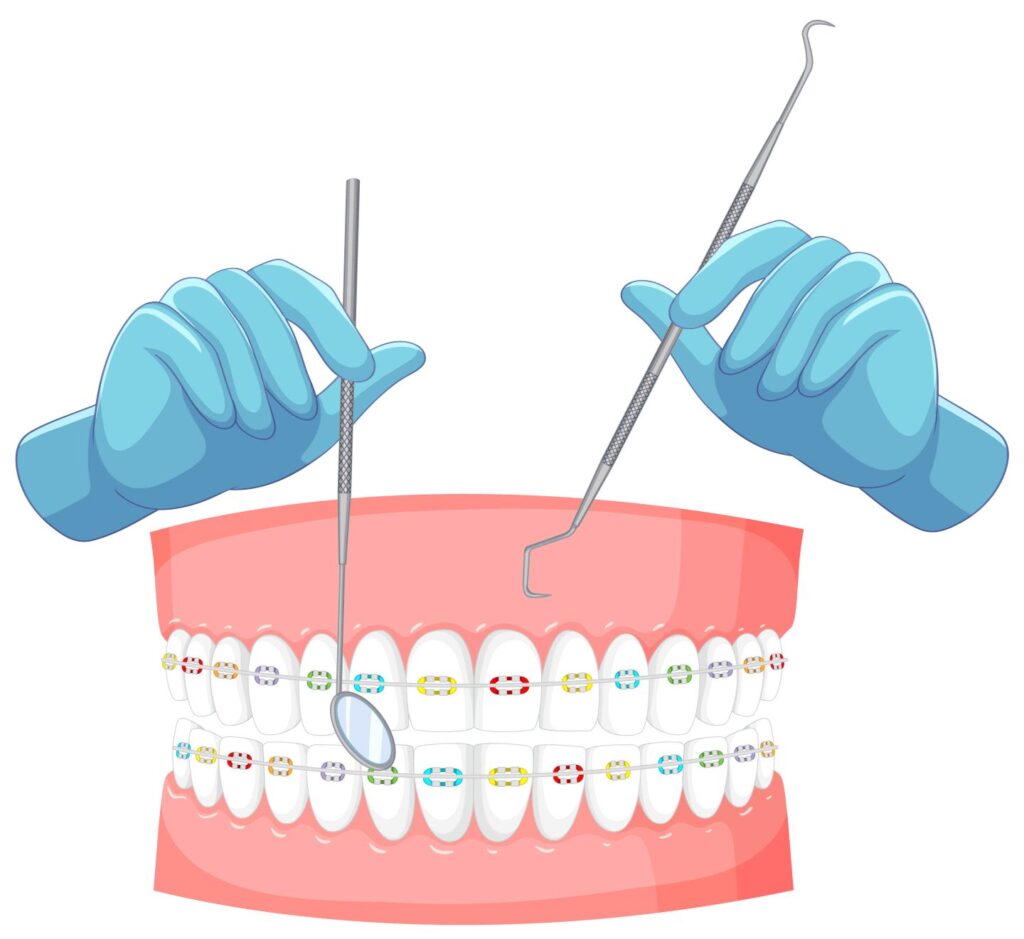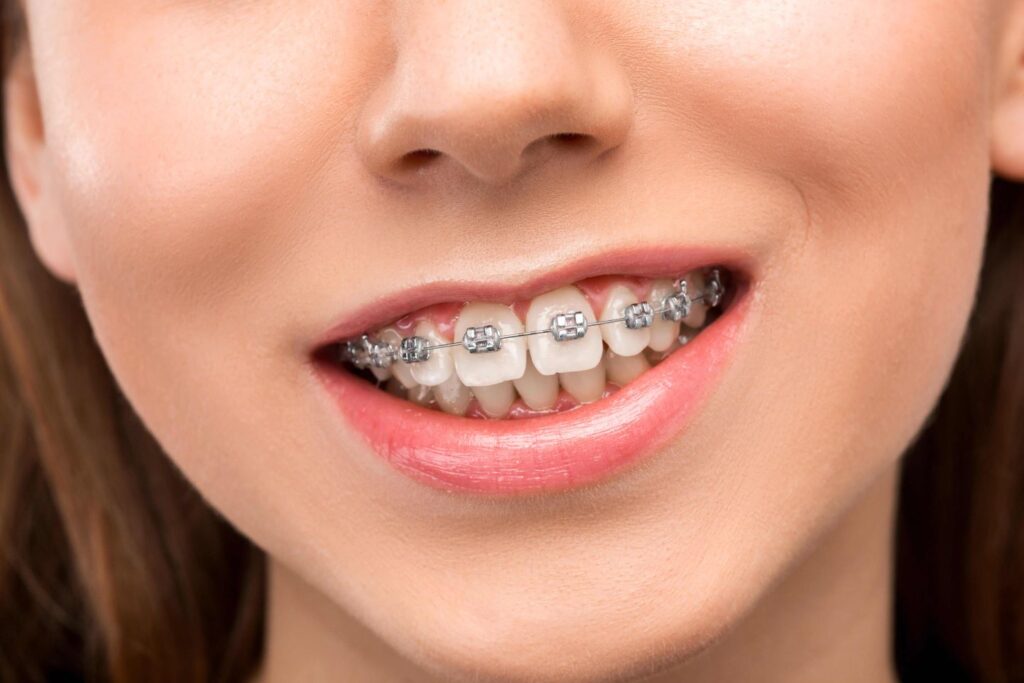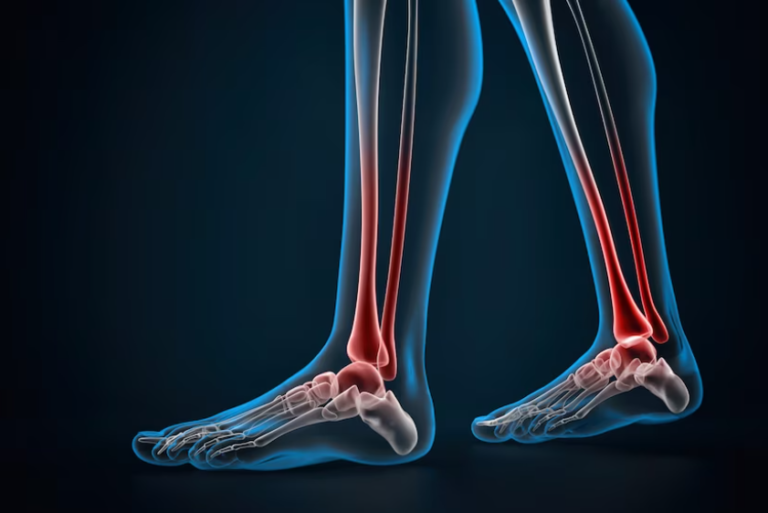Palate Expanders: How to Use, Types, Adjustment, and Alternatives

A palate expander is a dental appliance that increases the width of the upper jaw, allowing for greater room for teeth. Overcrowding and a narrow palate are two of the most prevalent orthodontic concerns treated with this method. The expander is custom-made and gradually expands the palate using gentle pressure, helping to improve oral alignment.
What are palate expanders?
A dental appliance used to enlarge the upper jaw, a palatal expander is also known as a rapid palatal expander (RPE). It is widely used in orthodontics to correct problems, including overbites and underbites, narrow palates, and crowded teeth.
Construction of Palatal Expanders
The palate expander is made up of two pieces that are joined together by a screw or expansion mechanism. Each patient’s appliance is tailored specifically to their mouth. Bands or bonding materials are used to secure it to the molars, and it rests on the palate. A palatal expander is a dental appliance that broadens the upper jaw by exerting mild pressure on the palatal bones over time.
Working of the Palatal Expanders
The expander opens up additional room in the jaw, which the teeth can fill in. Overcrowding, crossbites, and impacted teeth are just some of the issues that this can help. In addition, having a broader palate can help with breathing difficulties caused by a narrow airway.
How to Adjust Palatal Expanders
Adjustments to a palatal expander are a normal part of the treatment. You can trigger the expansion mechanism by rotating a key or screw and gradually separating the two sections. This expansion is often performed once or twice daily following the orthodontist’s directions. While their facial bones are still developing, toddlers and teenagers often benefit from using a palatal expander. However, palatal expanders for adults are also used, but with a longer recovery time.
Impact of Palatal Expanders
Treatment with a palatal expander can take a few months or longer, depending on the severity of the patient’s condition. Palate enlargement is a procedure that requires the expertise of an orthodontist and should only be attempted under their supervision. They will keep tabs on how things are going and adjust as needed to ensure the patient is as comfortable as possible.

Types of a Palate Expander
Depending on your orthodontic demands, you can choose from several different types of palatal expanders. Some typical varieties include the following:
Haas Expander: The Haas expander is among the most well-known models. It has a screw mechanism in the middle and consists of two metal bands fixed to the top molars. The palatal expander has a key that may be turned to make minor adjustments.
Hyrax Expander: The Hyrax expander is similar to the Haas expander but often composed of acrylic. Similarly, a key can spin the device’s screw and expand it.
Quad-Helix Expander: The Quad-Helix expander is a wire framework fixed to the upper molars and used to extend the jaw. A controlled and constant expansion of the palate is provided. Expanders constructed of acrylic and wire can be taken out and about as needed. They are commonly utilized when a fixed expander has been removed or when just slight expansion is required.
Tiny Titanium Scrows: Tiny titanium screws are surgically implanted into the palate to anchor the appliance when using a mini-implant-supported expander. During the growth phase, it provides more stability and command.
Important Note:
Several criteria, such as the nature of the orthodontic problem, the patient’s age, and personal preferences, should be considered when deciding on a palatal expander. Orthodontists carefully consider each instance when deciding which palatal expander would best help them reach their goals. A skilled orthodontist will be able to determine your specific needs and propose the best palate expander for you after a thorough examination.
How to Use Palate Expander?
A consultation with an orthodontist is recommended before using a palatal expander. Here’s how most people employ a palatal expander:
Placement: The orthodontist will glue metal bands or use other attachment methods to securely fasten the palatal expander to the patient’s upper molars.
Activation: Palatal expanders can be activated using a key, a screw, or another expansion mechanism. The orthodontist will detail precisely when and how often you should rotate the expander. This is often performed twice a day.
Gradual Expansion: The progressive pressure generated by turning the key or screw gradually widens the palate. To minimize excessive growth or discomfort, completing the prescribed number of turns recommended by the orthodontist is crucial. Visits to the orthodontist for adjustments are scheduled regularly so that progress can be checked and any required modifications made.
Adjustment Visits: The orthodontist may turn the expander farther or make additional adjustments during these appointments. Good dental hygiene is essential for success with a palate expander.
Oral Hygiene: Keeping the expander and surrounding teeth clean requires consistent oral hygiene practices, including brushing and flossing.
Monitoring and Follow-up: The expansion of the palate will be carefully monitored by the orthodontist, who will make any necessary changes. The time needed to achieve positive results from therapy varies from patient to patient.
Important Note: It is crucial to adhere strictly to the orthodontist’s instructions throughout treatment. It’s important to immediately inform your orthodontist if you’re having any problems, pain, or discomfort so they can help you figure things out.

Advantages and Disadvantages of Palate Expanders
There are benefits and drawbacks to using a palatal expander before and after. Some benefits and drawbacks of using a palatal expander are as follows:
Pros (Advantages)
- Correcting Dental Issues: Overcrowding, crossbites, and impacted teeth are just some of the dental issues that can be remedied with a palatal expander. They make the jaw more prominent, which helps with alignment and hygiene.
- Non-Invasive: Palate expanders offer a non-invasive alternative to traditional orthodontic surgery. They are less intrusive than alternatives such as orthognathic surgery because they don’t involve incisions.
- Early Intervention: Palatal expanders are commonly utilized in toddlers and teenagers whose jaws are still developing as a means of early intervention. Palate expansion at a young age can help correct problems before they worsen, avoiding the need for more extensive surgeries later on.
- Improved Breathing: When used to treat respiratory problems like sleep apnea or snoring in which a narrow palate contributes, ppalatal expanders can improve breathing by opening the airway.
Cons (Disadvantages)
- Discomfort: Initial discomfort from using a palate expander may include soreness, pressure, and trouble with speech and eating. However, these issues usually disappear when the patient becomes accustomed to the device.
- Maintenance and Care: Palatal expanders need to be cleaned and maintained routinely. Maintaining regular dental hygiene and a clean expander is crucial in avoiding oral health and wellness complications.
- Adjustment Period: Patients may need some time to become used to having the palatal expander in their mouth, particularly when it comes to eating and talking.While the patient adjusts to the device, they may experience temporary speech impairment.
- Length of Treatment: The time it takes to achieve the desired results with palate expansion treatment varies from patient to patient. It may take the patient several months to see benefits, so they should be patient and dedicated.
Note: A professional orthodontist can evaluate your unique case, explain the benefits and risks of palate expansion, and help you decide if it’s the right choice.
Duration of Wearing the Palate Expander
- Each patient is different, and so is the recommended length of time they wear their palatal expander. Palate expanders are typically used for a few months.
- The orthodontist will establish the exact time frame based on regular monitoring and adjusting.
- The prescribed wearing time and any necessary changes should be carried out per the orthodontist’s guidelines.
- Adherence to the treatment plan is essential for successful outcomes. Visits to the orthodontist at regular intervals during treatment verify that the palatal expander produces the intended results.
Alternatives of a Palate Expander
Although palatal expanders are frequently used, there are several methods for fixing a small palate:
- Orthodontic Braces: Space and tooth alignment can be improved with orthodontic braces alone, eliminating the need for palate expansion in some patients.
- Invisalign: Clear aligners like Invisalign can progressively reposition teeth into normal alignment to treat mild cases of the narrow palate.
- Orthognathic Surgery: In more extreme cases, an orthognathic surgeon may consider expanding the palate and other jaw surgical procedures using orthognathic surgery.
- Extraction and Retraction: In some cases, orthodontic therapy followed by individual teeth extraction and retraction might broaden the dental arch.
Note: Treatment alternatives are selected based on the nature of the problem, the patient’s preferences, and the orthodontist’s or oral surgeon’s advice. It would help if you talked to a dentist to determine the best treatment for your unique situation.
How to Care for Teeth While Wearing Palate Expanders?
Keeping up with regular brushing and flossing is very important while using a palatal expander. While getting a palatal expander, here are some ways to keep your teeth healthy:
- Use a soft-bristled toothbrush at least twice daily to clean your teeth properly.
- Brush all sides of the palate expander lightly to ensure it doesn’t become scratched.
- Use dental floss or an interdental brush to clean the space between your teeth and the expander.
- Move cautiously around the expander, scraping away at any stuck food or plaque.
- Use an antibacterial mouth rinse, such as the one suggested by your orthodontist.
As a result, you’ll have a cleaner, fresher mouth with less bacteria.
Chew food and Swallow: Sticky, firm, or chewy foods should be avoided because they can damage or get stuck in the expander. Reduce the strain on the expander by chopping the meal into bite-sized pieces.
Regular Check-ups: Attend all your appointments with your orthodontist so that adjustments may be made and your progress can be monitored. At these checkups, the orthodontist can assess the effectiveness of the palatal expander and resolve any issues that may arise.
Hydration: Sip water frequently throughout the day to keep your mouth moist and remove food debris.
Products for Good Oral Hygiene: An orthodontic toothbrush, floss threader, or water flosser made specifically for braces or appliances will help you reach and clean the parts of your mouth that the standard toothbrush can’t.
Important Note: Care for your palate expanders according to your orthodontist’s instructions. The health of your mouth and the effectiveness of your palatal expander depends on your commitment to regular dental care and proper oral hygiene.
Conclusion for Palate Expanders
As a result, palatal expanders are a highly effective orthodontic tool for enlarging the upper jaw and facilitating better tooth alignment. In addition, their usefulness in dealing with challenges associated with a limited palette is also established, even though they are not without drawbacks. Good oral hygiene and successful outcomes during palate expander key therapy depend on diligent brushing, flossing, and regular visits to the dentist. A professional orthodontist should be consulted so treatment may be planned, progress can be monitored, and any required adjustments can be made. By following the specified care instructions and keeping appropriate oral hygiene practices, you can support the effectiveness of your palatal expander procedure and contribute to a healthy, aligned smile.







